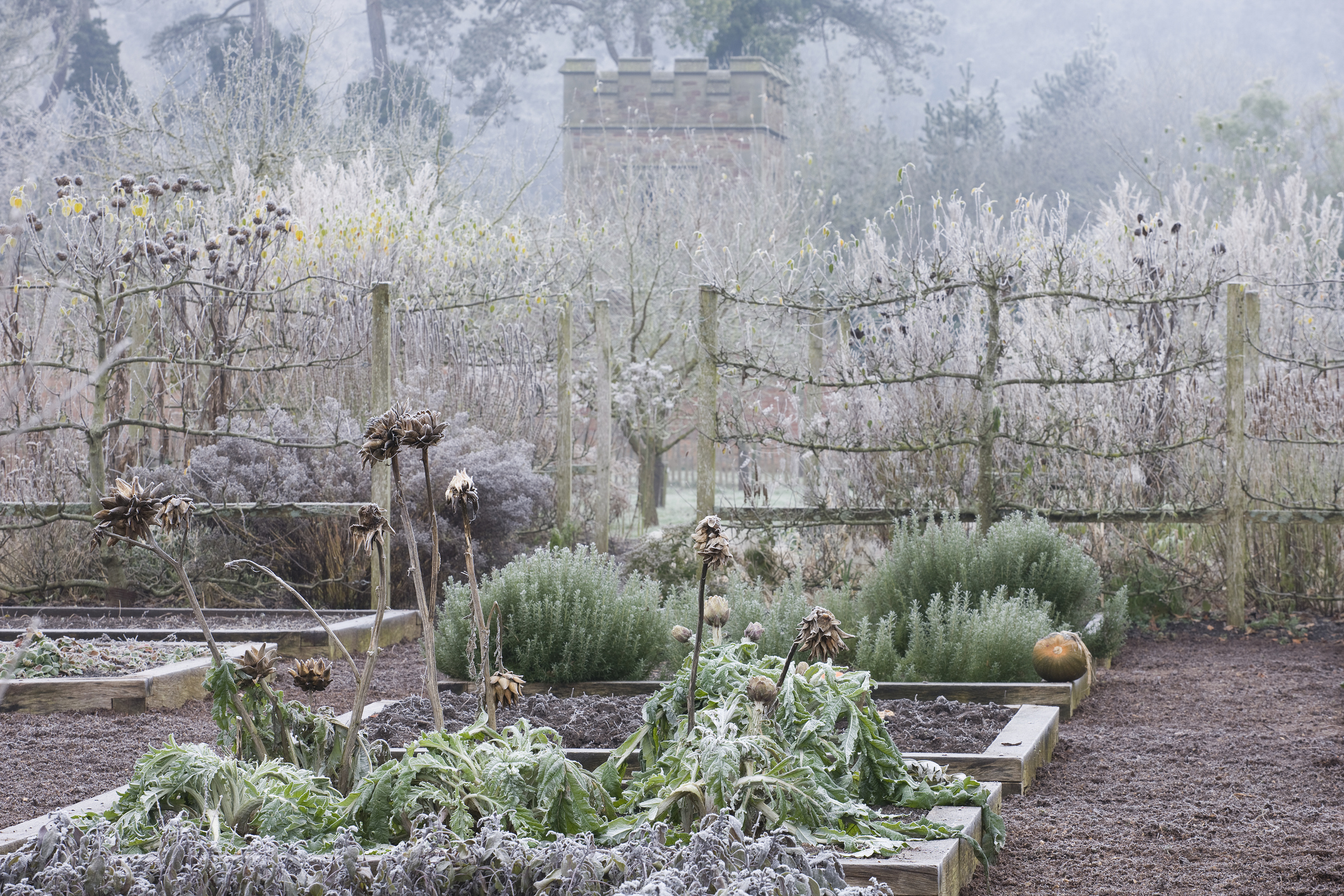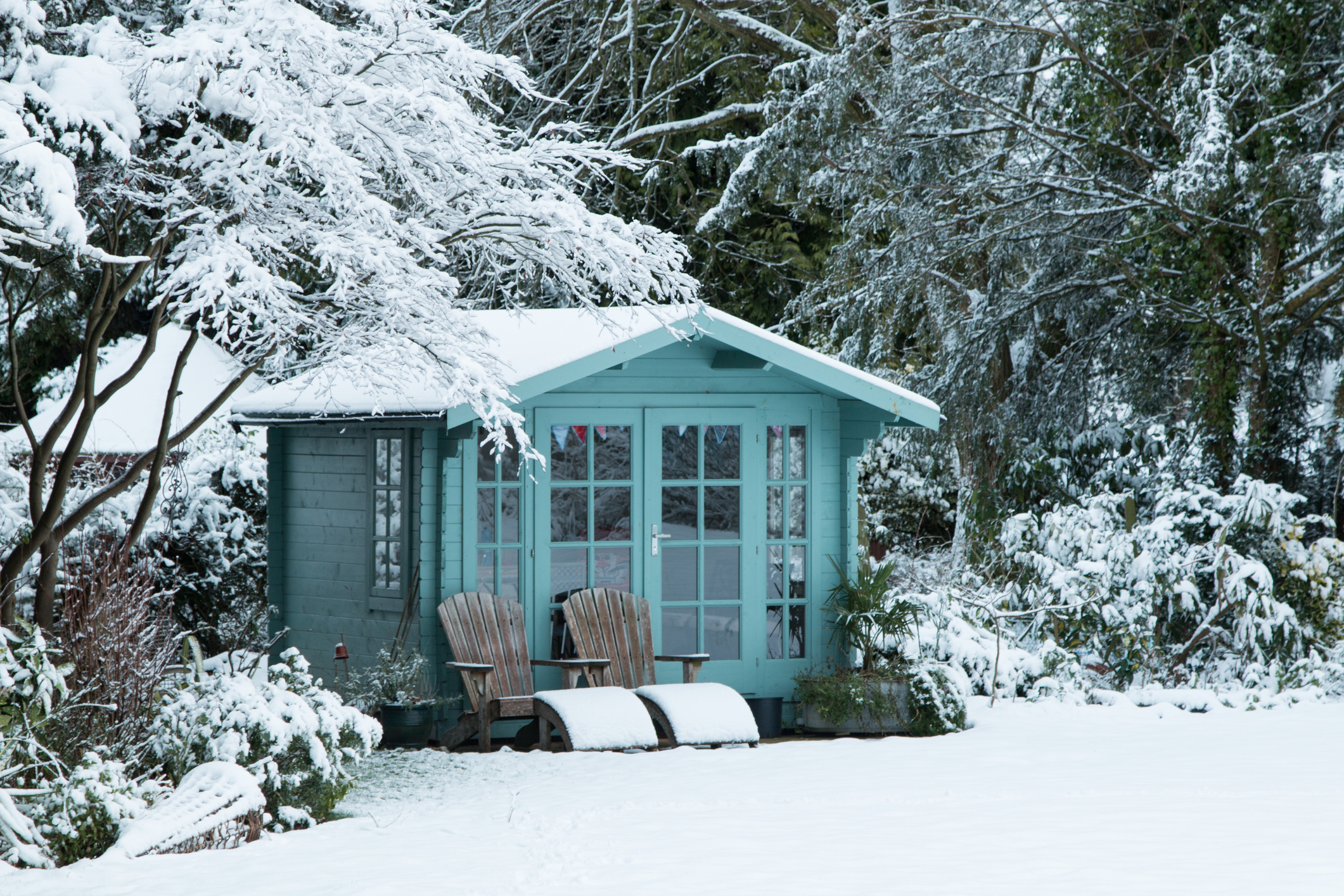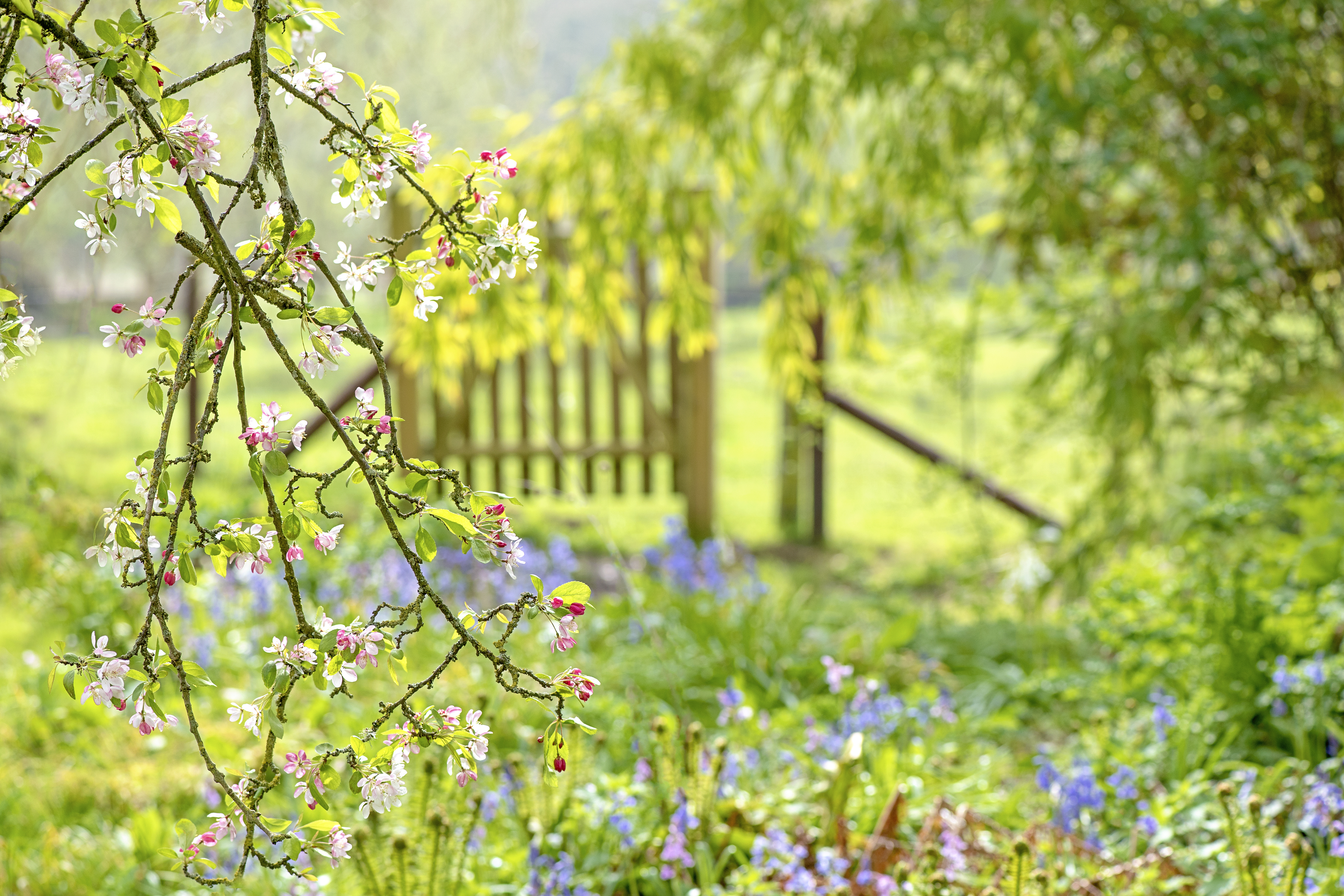A gardener's guide to winter, from late autumn to the end of February
Tiffany Daneff shares her winter gardening tips.


Knowing what you have to do — and what you can safely leave for later — is part of the art of gardening. Follow this winter garden calendar and you won't go far wrong.
Late autumn
At the end of the year, leaves are raked and blown into piles, then sucked up by the Terra Vac (a handy machine originally designed for clearing horse droppings from paddocks) and deposited into a huge composting bay. The same is done with all the hedge clippings. Turned four to six times over the course of the year, using a front-loader tractor, the resulting monster heap generates temperatures of up to 60˚C and will be ready for use in 10 months
December
Once the last leaves have been removed, the previous year’s leaf compost (now broken down into a friable mulch) is spread in a 2in-deep layer across all the beds and borders before the really cold weather sets in and freezes the ground. Mulching now also avoids mulching over emerging spring bulbs

Early January
The roses are pruned as soon as possible after Christmas, so as not to damage emerging bulbs. At the same time, hazel rods and willow wands, coppiced from the estate’s woodlands, are used to build supports for large shrub roses, clematis and tall perennials. Rose supports are fashioned from hazel uprights, through which twists of willow are woven. These are sturdy enough to last a couple of years. Herbaceous supports are woven from ‘feathered’ slender hazel branches and are replaced each year
January
Large evergreens are pruned and a cherry picker is used to tackle the massive laurel hedges. The holly, elaeagnus and decorative pears are also pruned now. The individual evergreens are pruned with small hedge cutters
Early February
Well-rotted horse manure is spread around the roses
Late February
The Group Three clematis in the rose beds are pruned and tied to individual hazel supports. These supports will carry the volume and weight of the clematis and so protect the surrounding roses.
Exquisite houses, the beauty of Nature, and how to get the most from your life, straight to your inbox.

Monty Don: The point of gardening? It's to find solace, to be happy, to make beauty, have fun and muck about. How you do it doesn't matter.
Monty Don, gardening writer and broadcaster, speaks to Country Life’s Tiffany Daneff about dogs with film presence and the lockdown

Credit: Jacky Parker via Getty Images
Your month-by-month checklist of what to do in the garden and when in 2022
Keeping on top of the gardening jobs can be daunting, and it's all too easy to let things slide in

A month-by-month guide to the most beautiful gardens to visit in Britain
Some gardens are even better in winter. Read our list of the best gardens to visit all year round.
Previously the Editor of GardenLife, Tiffany has also written and ghostwritten several books. She launched The Telegraph gardening section and was editor of IntoGardens magazine. She has chaired talks and in conversations with leading garden designers. She gardens in a wind-swept frost pocket in Northamptonshire and is learning not to mind — too much — about sharing her plot with the resident rabbits and moles.
-
 Suit yourself: I’m a 49 year-old man-about-town and I’ve never owned a suit
Suit yourself: I’m a 49 year-old man-about-town and I’ve never owned a suitWhen Hugh Smithson-Wright turned up to Country Life's annual Gentleman's Life party sans suit, it sparked a passionate conversation about why the formal fashion just isn't for everyone.
-
 'The ugliness and craziness is a part of its charm': The Country Life guide to Bangkok
'The ugliness and craziness is a part of its charm': The Country Life guide to BangkokWhere to stay, where to eat and what to do in the Thai capital.
